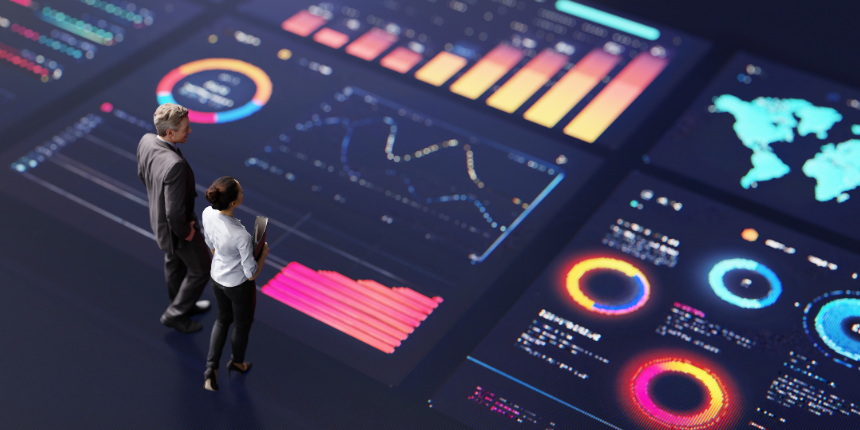

This week in New York, Zhenya Brisker, Vice President, Digital Media at DAC, joined Google for Think Leads 2025, where the spotlight was on the future of lead generation and performance marketing. The overarching direction is clear: Google is doubling down on AI-powered efficiency and performance, uniting data, content, and campaign execution under smarter automation, better measurement, and more proactive support. The goal? To meet customers where they are, anticipate what they need, and streamline the path from intention to conversion. In this article, we will share with you the key insights presented at the event.
Google’s AI Essentials 2.0: The next framework for smarter marketing
Google introduced AI Essentials 2.0, a framework that consolidates its top AI innovations into three pillars of strength.
- Data Strength: Expanded options to onboard and connect first-party data, from website tags and offline CRM sources to enhanced data management tools. Stronger data inputs mean more reliable targeting and personalisation.
- Content Strength: AI-enabled creative production across assets, images, and video, paired with SEO-centered content guidance and new creative tools like Asset Studio. This is about giving marketers the ability to generate, test, and scale creative faster.
- Performance Strength: Smarter automation in targeting and creative formats, plus greater flexibility across campaign types like Search, Performance Max, and Demand Gen.
There’s also a new dimension labeled Agentic, reflecting Google’s push to go beyond tools. It bundles features that actively assist advertisers with expert guidance, proactive diagnostics, and tailored recommendations, moving Google closer to a true partner role in campaign execution.
Google’s Power Pack: Supercharging lead generation
To accelerate lead generation, Google unveiled the Power Pack, a collection of AI enhancements across Search, Performance Max, and Demand Gen. These updates are designed to broaden reach, improve creative, and give marketers more control and transparency.
- AI Max for Search goes beyond keywords by automatically capturing untapped queries, optimising final URLs, and enriching ad creative in real time. The goal is to surface ads where intent exists, but traditional targeting might miss it.
- Demand Gen updates add new video capabilities, lookalike audiences, and media mix controls. This makes it easier to reach the right people across YouTube, Discover, and Gmail, while adapting content formats to match user behaviour.
- Performance Max enhancements bring stronger asset mix recommendations, final URL expansion, and clearer reporting on search terms and channel performance, giving advertisers better visibility into how campaigns are working.
By combining these upgrades, Power Pack positions marketers to capture demand more efficiently across multiple Google surfaces, while still offering the insights needed to guide strategy.
Smarter data, sharper measurement
Proving which campaigns truly drive growth remains a top priority and Google is investing heavily in tools that make measurement smarter and more actionable.
- Data Manager centralises first-party data from web, app, and offline CRM sources, strengthening the signals that power targeting and optimisation. With the new Data Manager API, marketers can also build programmatic integrations for more advanced use cases.
- Lead Gen reports and suggested audiences highlight where prospects drop off, which segments perform best, and where improvements can be made. These insights support both acquisition and retention strategies.
- Tag Gateway and Scenario Planning (Meridian Tool) give teams more control over measurement infrastructure and the ability to model “what-if” scenarios. This helps predict how budget or media mix adjustments could impact results before committing spend.
Together, these innovations give brands clearer visibility into performance and the agility to optimise campaigns with confidence.
Reimagining search with AI-driven ad formats
Google is baking AI deeper into how people discover brands on search.
Ads in AI Mode and AI Overviews
Text and Shopping ads can now appear within AI-driven results—those exploratory, compare-and-contrast moments that go beyond classic keyword queries. It’s added reach at high-intent research stages, but it also means creative, feeds, and measurement need to be ready for a TotalSERP reality.
Stay Forward
Get exclusive insights into digital
media's top-trending topics delivered
directly to your inbox.
Smarter lead form ads
New qualifying questions and conditional follow-ups filter prospects earlier, boosting lead quality and reducing sales friction. Paired with CRM integrations, this helps teams prioritise higher-value inquiries and speed time to revenue.
The result is broader visibility across AI-first search experiences, combined with ad formats that prioritise lead quality over sheer volume.
From tools to partnership: Google’s new support model
Google is signaling a shift in how it works with advertisers, moving from a provider of platforms to a more proactive partner.
- Your Google Ads Expert and Your Analytics Expert are being rolled out globally, offering ongoing optimisation support, proactive diagnostics, and tailored recommendations.
- In select markets, a Marketing Advisor is in testing, they are browser-based assistants that can troubleshoot issues, surface insights, and even interact through voice. While early, it points to a future where expert guidance is built directly into the advertiser workflow.
For marketers, this evolution means less time firefighting and more time focusing on strategy. Instead of waiting for problems to emerge, brands can expect faster support, more personalised insights, and greater efficiency in campaign management.
What this means for your digital media strategy
The announcements from Think Leads 2025 highlight one clear truth: success in the year ahead will depend on how well brands embrace AI, first-party data, and agile measurement. For marketers, that translates into five practical priorities:
- Prioritise first-party data collection and hygiene. Tools like Data Manager and AI Max for Search rely on clean, connected inputs.
- Diversify creative assets. A wider mix of images, video, and formats ensures AI can optimise effectively across surfaces.
- Test new formats early. Ads in AI Mode and AI Overviews offer competitive advantage while adoption is still low.
- Strengthen measurement infrastructure. Use Tag Gateway, scenario planning, and new reporting to track what truly drives impact.
- Budget with agility. Tools like Meridian allow teams to forecast spend and reallocate quickly as performance shifts.
For brands, the path forward is about more than adopting new tools, it’s about building the agility to anticipate, adapt, and act with confidence in a fast-changing landscape.
Contributing Experts
Stay Forward
Get exclusive insights into digital
media's top-trending topics delivered
directly to your inbox.



